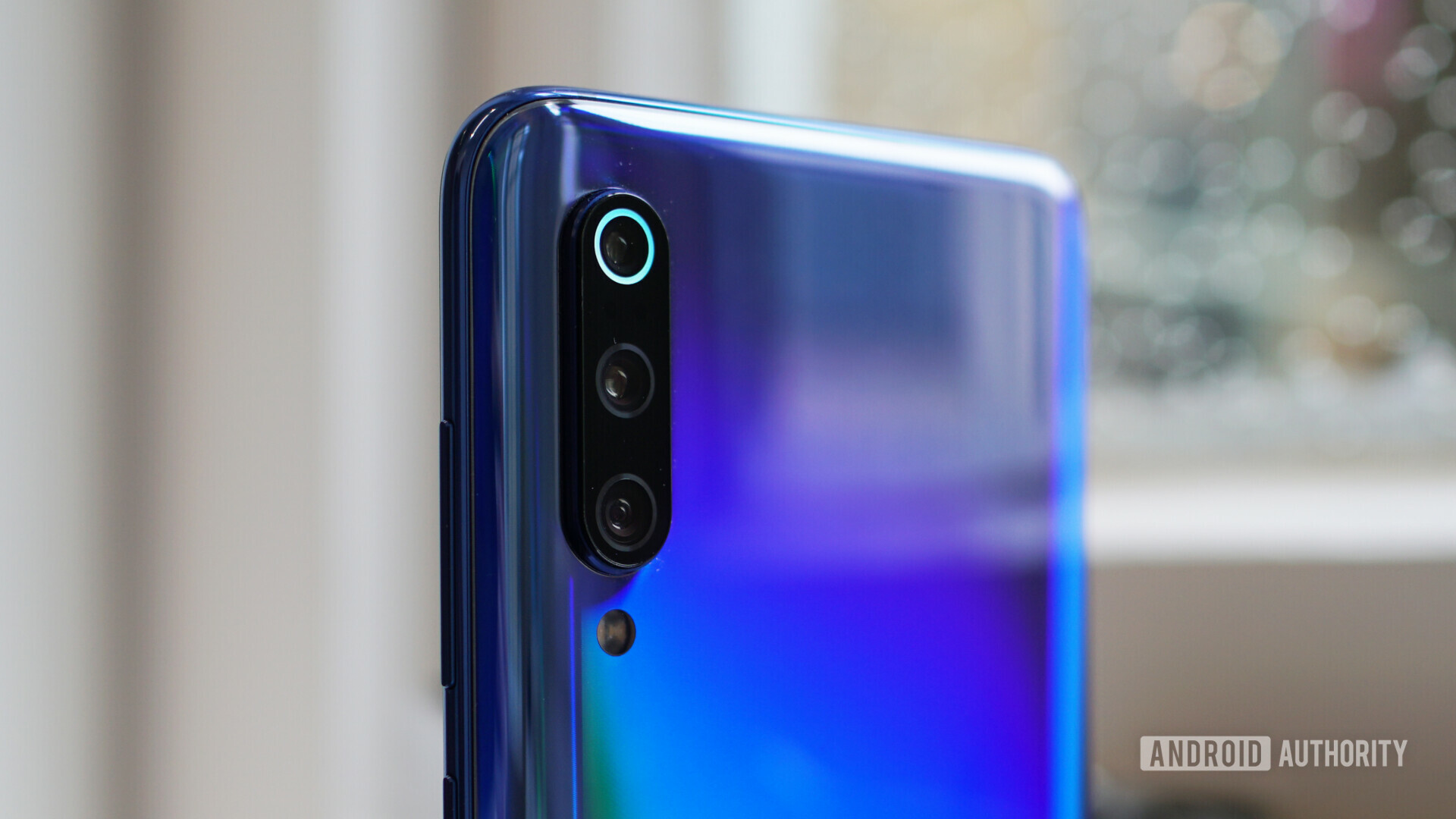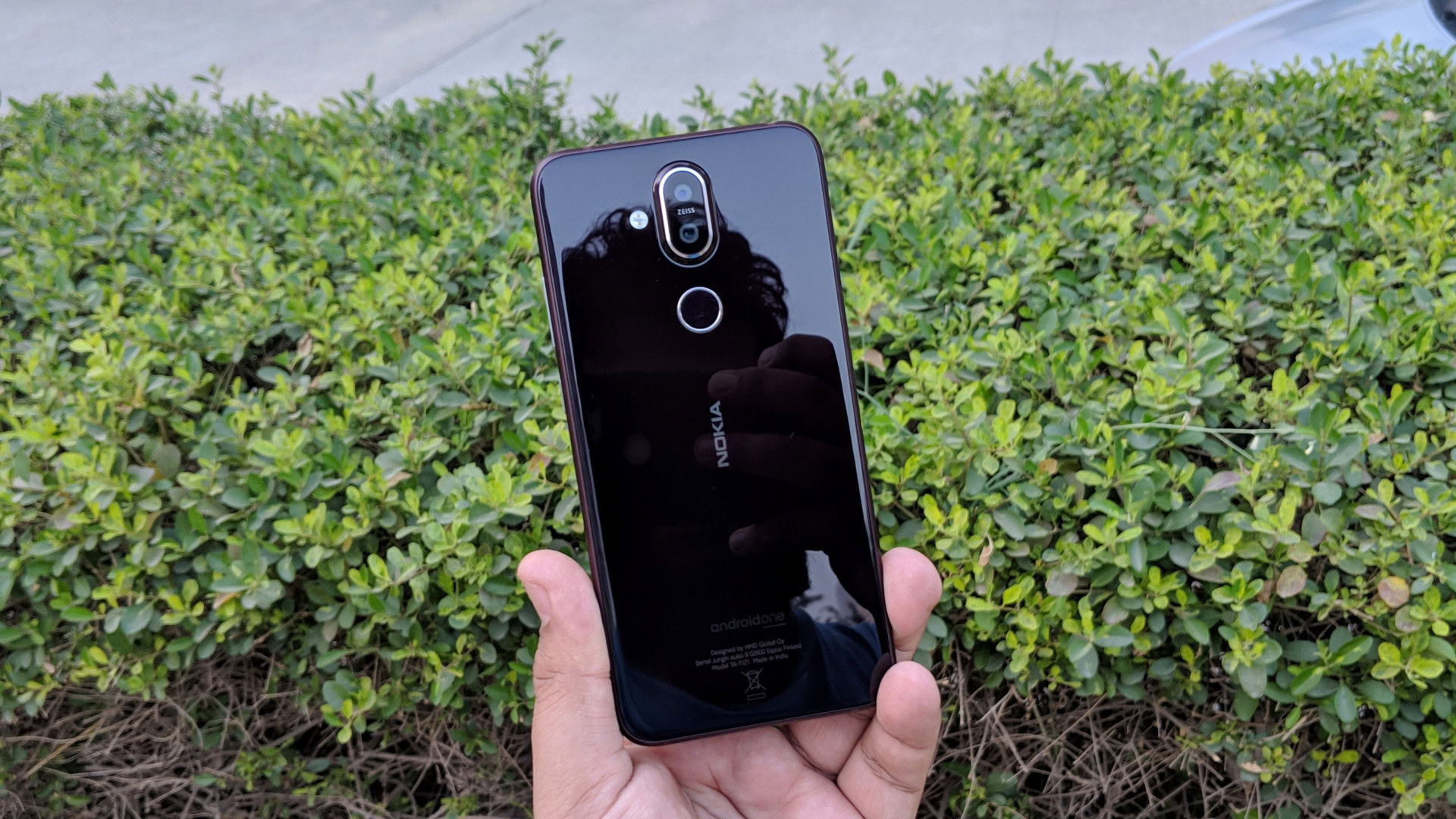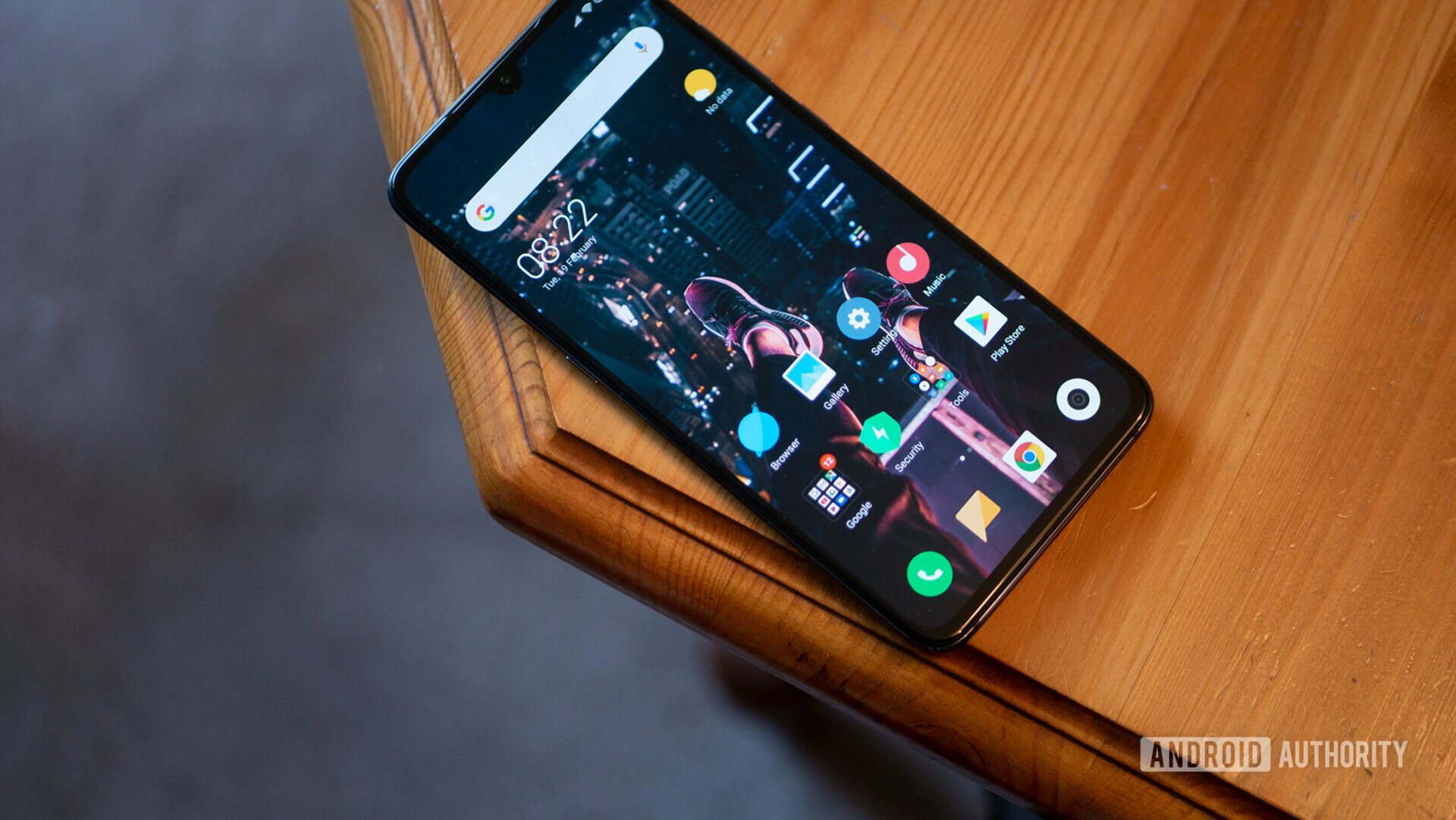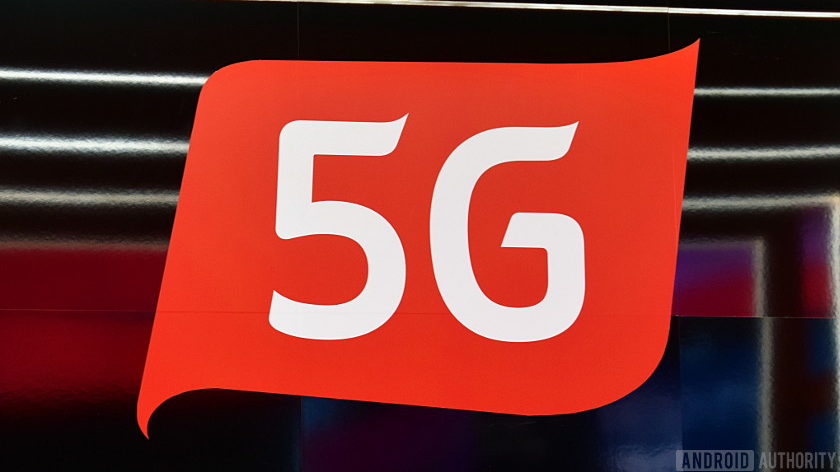Affiliate links on Android Authority may earn us a commission. Learn more.
Xiaomi Mi 9 vs Nokia 8.1: Which one is right for you?
The Xiaomi Mi 9 sports high-end specs, a great design, and it’s affordable, but how does it stack up against the competition? Let’s compare it to the Nokia 8.1, a popular mid-ranger with less power under the hood, but a leg up in a few areas.
The Xiaomi Mi 9 is a flagship and one of the first phones to pack the latest and greatest Snapdragon 855 chipset under the hood. The global version comes with 6GB of RAM, while users in China can also get their hands on 8GB and 12GB models. There’s 64GB or 128GB of storage available (China also gets a 256GB variant) that’s not expandable, so you’ll have to choose wisely. The phone also sports an in-display fingerprint scanner that supports shortcuts via a long press, though it currently only offers a QR scanner, a web search function, and adding a calendar event.
The Xiaomi Mi 9's battery can go from zero to 100 percent in around 65 minutes.
The Full HD+ AMOLED display comes in at 6.39 inches, with a waterdrop notch. The phone packs a 3,300mAh battery, which isn’t very impressive given the size of the device. It supports 27W charging, which gets the battery from zero to 100 percent in around 65 minutes, though that charger is sold separately — you only get an 18W charger in the box. The handset also supports wireless charging at 20W, which the battery to 100 percent in an hour and 40 minutes.

The Xiaomi Mi 9 sports three cameras on the back. The main sensor comes in at 48MP, but it uses pixel-binning by default, combining data from four pixels into one for 12MP shots. This should result in better images, especially at night. It’s joined by a 12MP telephoto lens for zoom and a 16MP ultra-wide lens that lets you capture more in your shots. It’s a similar setup we’ve already seen on devices like the HUAWEI Mate 20 Pro and will likely be used by a lot of other manufacturers this year.
The phone features AI-powered scene recognition, which changes the settings depending on what’s in the camera’s frame (landscape, food, pets) to produce a better shot. The phone will also suggest switching to the ultra-wide lens to capture more in an image, depending on the scene. The camera setup looks promising on paper, but we’ll reserve our full judgment until we review it.
Read next: Best phones with a triple-camera setup — what are your options?
The Xiaomi Mi 9 has a metal and glass design with a curved back for a premium look and feel, and it’s covered by sapphire glass to prevent scratches. It has a high screen-to-body ratio and comes in three gorgeous holographic colors — Lavender Violet, Ocean Blue, and Piano Black — that shift between different hues depending on how the light hits them. The Transparent Edition is also available (with 12GB RAM and 256GB storage) and shows purely decorative “components” under a frosted glass back, but you can only get it in China for now. Xiaomi says it will bring the Transparent Edition to other markets if demand is high enough.
In terms of software, you get Android 9.0 Pie with MIUI 10 on top, which has its good and bad sides. Unfortunately, the handset doesn’t have an IP rating for protection against water and dust or a headphone jack. The good news, though, is that the USB-C-to-3.5mm adapter is included in the retail box.

The Nokia 8.1 is a mid-ranger, which means it offers less in the specs department. It’s powered by the Snapdragon 710 chipset and has 4GB of RAM — considerably less than the Mi 9, depending on the model. It offers the same amount of storage as the entry-level global version of the Xiaomi Mi 9 — 64GB — but there’s a microSD card slot on board, so you can expand the storage by an additional 400GB.
The display is a bit smaller at 6.18 inches, but offers the same Full HD+ resolution. However, it’s an LCD panel, so you don’t get quite as vibrant colors and deep blacks as the AMOLED screen on the Xiaomi Mi 9.
The battery of the Nokia 8.1 comes in at 3,500mAh, making it 200mAh larger than the Xiaomi Mi 9’s. Paired with a smaller display and less powerful internals, it should offer better battery life. The battery supports 18W fast wired charging, but there’s no wireless charging like you get with its rival.
The Nokia 8.1 sports a dual-camera setup on the back with a 12MP main sensor and a 13MP depth sensor for those fancy bokeh shots. It can capture great-looking pictures in the right lighting conditions and supports AI-driven scene recognition. The phone also has a Dual-Sight mode, which lets you use the front and back cameras simultaneously for split-screen photos and videos.
However, the Nokia 8.1’s camera setup just isn’t as good as the Xiaomi Mi 9. It doesn’t offer the same versatility, lacking both a telephoto and a wide-angle lens.

Nokia’s handset is a part of the Android One family, so it runs on a stock version of Android 9.0 Pie. The device is bloat-free and will get at least two years of OS and three years of monthly security updates. Whether stock Android is better than MIUI is a matter of personal taste. Xiaomi’s skin has features like Dual apps and Second space, but it doesn’t have an app drawer and also comes with a ton of Xiaomi-made apps you’ll likely never use. However, you can always download a launcher like Nova to get a stock-like experience on the device if that’s your thing.
The Nokia 8.1 has a premium vibe, thanks to its metal frame and glass back. It’s a gorgeous phone, but its bezels are a bit thicker than the Mi 9’s. The notch is a lot wider as well, making it a lot more intrusive. It also leaves less room for notifications on the sides. The two-tone color options — blue and silver, steel and copper, and iron and steel — all look great, but they don’t stand out as much as the Mi 9’s options.
Just like the Xiaomi Mi 9, the Nokia 8.1 doesn’t have an IP rating for protection against water and dust. However, it has a headphone jack, so you won’t need a USB-C-to-3.5mm adapter or Bluetooth headphones to listen to music.
| Xiaomi Mi 9 | Nokia 8.1 | |
|---|---|---|
Display | Xiaomi Mi 9 6.39-inch AMOLED 2,340 x 1,080 resolution 19.5:9 aspect ratio 403ppi | Nokia 8.1 6.18-inch IPS LCD 2,280 x 1,080 resolution 18.7:9 aspect ratio 408ppi |
Processor | Xiaomi Mi 9 Snapdragon 855 chipset | Nokia 8.1 Snapdragon 710 chipset |
GPU | Xiaomi Mi 9 Adreno 640 | Nokia 8.1 Adreno 616 |
RAM | Xiaomi Mi 9 6GB/8GB/12GB (China) 6GB (global) | Nokia 8.1 4GB |
Storage | Xiaomi Mi 9 128GB/256GB (China) 64GB/128GB (global) | Nokia 8.1 64GB |
MicroSD | Xiaomi Mi 9 No | Nokia 8.1 Yes, up to 400GB |
Camera | Xiaomi Mi 9 Rear: 48MP f/1.75, 0.8/1.6μm, PDAF, 4:1 pixel binning, Sony IMX586 + 16MP f/2.2, 1.0μm ultrawide + 12MP f/2.2, 1.0μm telephoto Front: 20MP | Nokia 8.1 Rear: 12MP f/1.8 aperture primary sensor+ 13MP depth sensor Front: 20MP |
Battery | Xiaomi Mi 9 3,300 mAh 18W standard wired charging 27W wired charging with optional charger | Nokia 8.1 3,500mAh 18W wired charging |
Software | Xiaomi Mi 9 Android 9.0 Pie MIUI 10 | Nokia 8.1 Android 9.0 Pie Android One |
Headphone jack | Xiaomi Mi 9 No | Nokia 8.1 Yes |
IP rating | Xiaomi Mi 9 No | Nokia 8.1 No |
Dimensions | Xiaomi Mi 9 157.5 x 74.67 x 7.61mm, 173g | Nokia 8.1 154.8 x 75.76 x 7.97mm, 180g |
Xiaomi Mi 9 vs Nokia 8.1: Which one to get?

The Xiaomi Mi 9 is a better phone overall — there’s no doubt about that. It has a faster chipset, more RAM, a better camera, and I think it has a more eye-catching design. It also features a modern in-display fingerprint scanner. However, that doesn’t mean it’s a better option than the Nokia 8.1 for everyone.
The Nokia 8.1 offers more than the Xiaomi Mi 9 in a few areas.
The Nokia 8.1 offers more than its rival in a few areas. It offers expandable storage, a bigger battery, and a headphone jack. It also has a cleaner software experience, without Xiaomi’s bloatware.
Then there’s the price. Although the Xiaomi Mi 9 offers great value for money, it’s still more expensive than the Nokia 8.1. The phone starts at 3,000 yuan in China (~$445). However, the phone will cost more in Europe due to higher taxes. Although not confirmed, it will likely start somewhere between 450 (~$512) and 500 euros (~$570). Nokia 8.1 pricing depends on where you buy the device, but you can get it for as low as 400 euros (~$455).

Which phone to get comes down to what you value more. Personally, I’d go with the Xiaomi Mi 9. I’m not a big fan of MIUI and hate the fact the phone doesn’t have a headphone jack, but I’d still get it over the Nokia 8.1 because of the camera, design, in-display fingerprint scanner, and extra power under the hood. I’d gladly pay a little bit extra for that.
How about you? Which phone would you rather get and why? Let us know your thoughts in the comments!